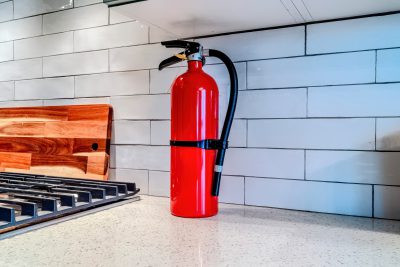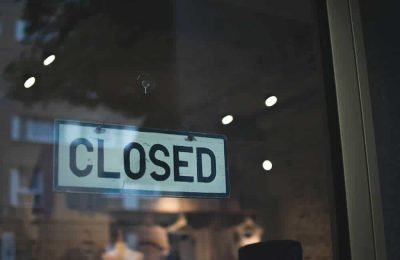When you become a landlord, you must get landlord buildings and contents insurance for your property. Unlike standard homeowners insurance, landlord insurance is specifically designed to cover the unique risks associated with renting out property and includes public liability insurance should anything happen to your tenant in your premises.
Why do you need landlord insurance?
Landlord insurance covers all the normal building and contents elements that a standard house insurance policy would cover but also has additional coverage in case the tenant damages anything maliciously or accidentally, legal and eviction costs and rent guarantee insurance.
Benefits of landlord insurance:
- Financial protection: Covers property damage, legal and eviction costs, and lost rental income.
- Tenant-related risks: Protects against accidental or malicious damage caused by tenants or any of their guests. It also covers any damage resulting from criminal activity in the property. In addition the public liability element of the insurance covers you if your tenant or their guests/belongings become injured or damaged within your property.
- Peace of mind: Allows you to focus on managing your investment without worrying about unexpected events or costs.

What does landlord insurance cover?
Landlord insurance typically provides three main areas of coverage: property damage, liability protection, and loss of rental income.
- Property damage coverage
Buildings insurance covers damage to the structure of the building only. Contents insurance covers kitchen and bathroom fittings, carpets, window coverings, light fittings and any furniture or appliances in the property etc. A common mistake some landlords make if they are letting out an unfurnished property is not taking out contents insurance cover as they assume the items mentioned above would be covered by the buildings insurance policy, which it is not.
What’s covered:
- Fire, storms, and leaks etc (depending on the policy).
- Theft or vandalism.
- Accidental damage
- Water leaks or electrical issues etc
What’s not covered:
- Routine maintenance or wear and tear (e.g., old roofing or plumbing).
- Certain natural disasters like floods or earthquakes, unless added as extra coverage.
- Liability protection
If a tenant or visitor is injured in your property and claims you were at fault, public liability coverage steps in to protect you from legal and medical expenses. This is only available in landlord insurance policies and not standard buildings insurance policies which is why it is so important to convert your policy to a landlord insurance product if you have ever previously lived in the property yourself.
- Loss of rental income
If your property becomes uninhabitable due to a covered event, such as a fire or flood, this coverage reimburses you for lost rental income during the repair period. In addition if the tenant has rent arrears, provided they have passed a reference check before you let the property to them and provided you have followed the claiming criteria which normally includes contacting the tenant with prescribed information, you should be able to claim for rent arrears.
There are two types of rent guarantee insurance policies;
- Reactive policies. This means it pays out after the event. So if the tenant has 6 months of rent arrears you need to wait until you have the final arrears figure before making the claim and you will get paid a one off settlement for this.
- Rent on time policies. This means that they pay out month on month for rent arrears, however, there normally is a premium fee attached to these types of properties.
Accidental or malicious damage by tenants
While basic landlord insurance policies cover some tenant-related damages, adding this element to the policy ensures broader protection against intentional or accidental destruction caused by tenants or their guests to your property.
How to choose the right landlord insurance policy
Here are some tips to help you make an informed decision:
- Assess your risks
Evaluate the specific risks associated with your property and tenancy. Understanding your risks helps you identify essential coverage areas.
- Compare multiple providers
Don’t settle for the first quote you receive. Compare policies from different insurers to ensure you get comprehensive coverage at a competitive price.
- Check coverage limits and exclusions
Pay close attention to policy limits and exclusions. If you are able to always add on legal and eviction cover, rent guarantee cover and accidental/malicious damage cover. These elements are the ones you are most likely to need to claim as a landlord as generally if properties are kept in a good state of repair they rarely have claimable damages. A property is one of the most expensive assets that a landlord owns, so to pay an extra premium per month to ensure you are fully covered is a sensible strategy to adopt.
- Consider the cost
While it’s tempting to choose the cheapest option, inadequate coverage could leave you exposed to significant financial losses. This should be factored into your decision making.
- Read reviews and seek recommendations
Check reviews of insurance providers to gauge customer satisfaction. The higher the Defacto rating on the insurance, the better it is.
- Consult a professional
If you’re unsure about your coverage needs, consider consulting an insurance broker or property management expert who can guide you through the process.
Common mistakes to avoid
- Relying on homeowners insurance
Homeowners insurance is not designed for rental properties and often excludes coverage for tenant-related public liability risks.
- Underestimating coverage needs
Don’t assume that basic property damage coverage is sufficient.
- Ignoring the fine print
Always read the policy thoroughly to understand what is and isn’t covered.
- Failing to update your policy
If you make significant changes to the property, such as renovations or adding appliances, or increasing the rent, update your policy to reflect these changes.
- Skipping regular reviews
Insurance needs can change over time. Review your policy annually to ensure it still aligns with your property’s risks and your financial goals.
How much does landlord insurance cost?
The cost of landlord insurance varies based on factors such as:
- Property location
- Property type
- Coverage levels
- Tenant type
Filing a landlord insurance claim
In the event of a covered loss, knowing how to file a claim can make the process smoother. Follow these steps:
- Document the damage/loss
Take photos and gather evidence of the damage. Where possible provide receipts or professional reports for the cause of the damage and remedial work required to rectify the damage.
- Notify your insurer promptly
Most policies require you to report claims within a specific timeframe so report it as quickly as possible.
- Provide necessary documentation
Submit repair estimates, receipts, and any other requested documents to expedite the process. In the event of a rent insurance claim provide a copy of the rent ledger.
Follow up
Stay in contact with your insurance provider to monitor the status of your claim and address any additional requirements.
Selecting the correct insurance product for yourself is a critical element in getting your property ready to rent and is worth spending a little more per annum to fully protect and de-risk your investment. Property is one of the few investments that you can protect every element of.










